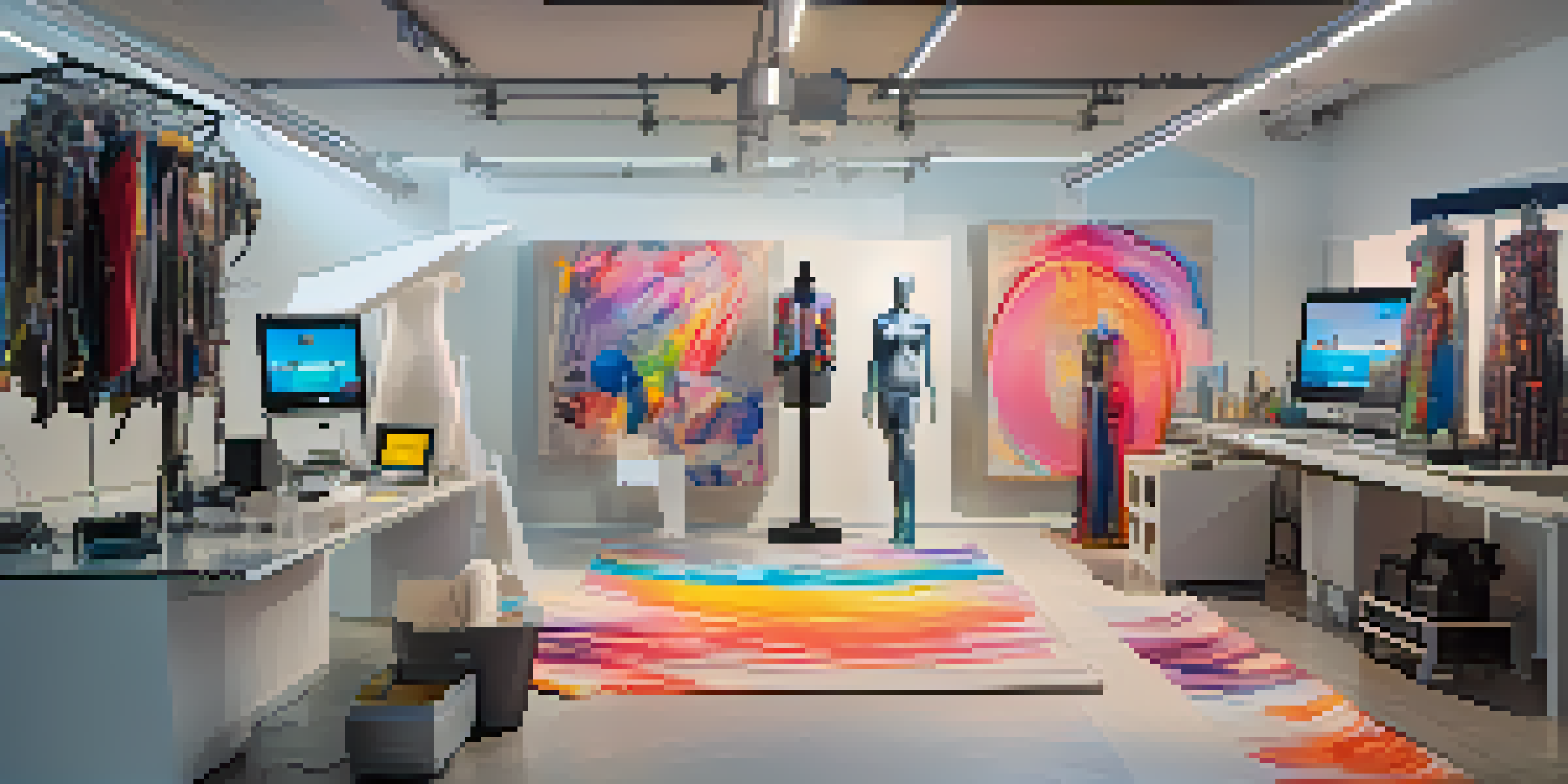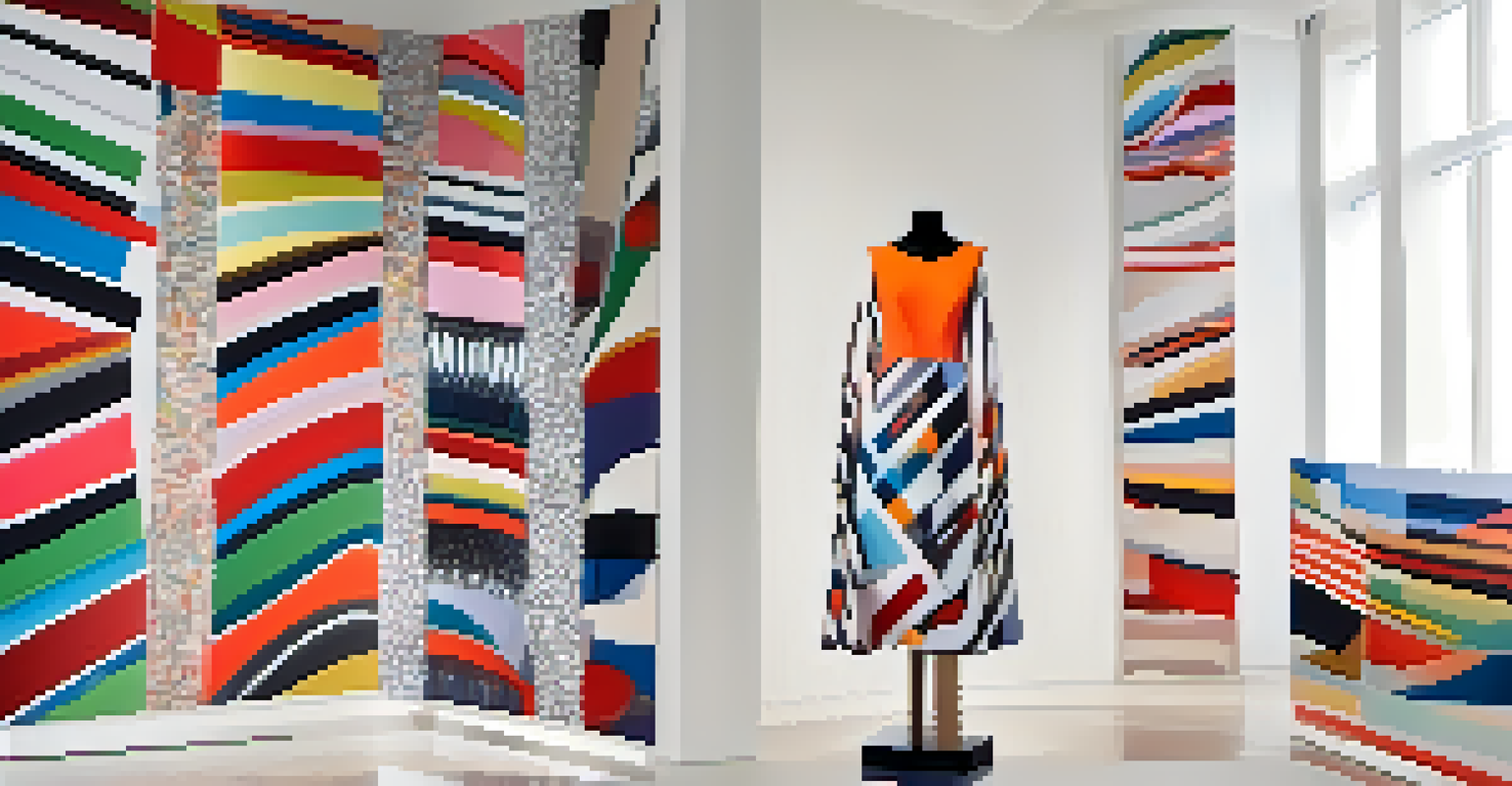The Role of Cross-Industry Partnerships in Fashion Innovation

Understanding Cross-Industry Partnerships in Fashion
Cross-industry partnerships refer to collaborations between businesses from different sectors. In the fashion industry, this means teaming up with tech companies, sustainability organizations, or even healthcare providers to foster innovation. These partnerships bring together diverse expertise, sparking creativity and unique solutions that wouldn't arise in isolation.
The best way to predict the future is to create it.
For example, fashion brands partnering with technology firms can explore advancements like smart fabrics or augmented reality shopping experiences. This blending of skills not only enhances the consumer experience but also opens the door to new product lines. Ultimately, these collaborations encourage a culture of experimentation, vital for staying relevant in a fast-paced market.
As consumers become more discerning, the need for innovation in fashion has never been more critical. Cross-industry partnerships allow brands to tap into fresh perspectives, ensuring they remain competitive and responsive to market demands. This dynamic approach is reshaping how fashion is created, marketed, and consumed.
The Impact of Technology on Fashion Innovation
Technology is a key driver in fashion innovation, especially when combined with cross-industry partnerships. Collaborations with tech companies can lead to groundbreaking developments like 3D printing, allowing designers to create intricate pieces with minimal waste. This not only revolutionizes the design process but also addresses sustainability concerns, a hot topic in today's fashion landscape.

Moreover, the integration of artificial intelligence (AI) in fashion helps brands predict trends and consumer preferences. By partnering with AI specialists, fashion companies can analyze data more effectively, creating products that resonate with their target audience. This tech-savvy approach not only boosts sales but also enhances customer satisfaction.
Cross-Industry Partnerships Drive Innovation
Collaborations between fashion brands and diverse sectors like technology and sustainability foster creativity and unique solutions.
The fusion of technology and fashion through partnerships exemplifies a forward-thinking mindset. By embracing innovation, brands can stay ahead of the curve, adopting new methods that set them apart in a crowded marketplace. This synergy not only fosters growth but also encourages a culture of continuous improvement.
Sustainability Through Cross-Industry Collaborations
Sustainability has become a crucial focus in the fashion industry, prompting brands to seek innovative solutions through cross-industry partnerships. Collaborating with environmental organizations can lead to the development of sustainable materials and practices. For instance, brands are now experimenting with recycled fabrics or biodegradable packaging, showcasing a commitment to reducing their environmental footprint.
Innovation distinguishes between a leader and a follower.
These partnerships not only benefit the environment but also enhance a brand's reputation among increasingly eco-conscious consumers. By aligning with sustainability initiatives, fashion brands can demonstrate their dedication to ethical practices, which is essential for building trust and loyalty. This shift towards sustainability is no longer a trend; it’s a fundamental aspect of modern fashion.
Additionally, working with scientists and researchers allows brands to access cutting-edge insights into sustainable practices. This collaboration can lead to innovative solutions that might have been overlooked otherwise. In a world where consumers are demanding more transparency, partnerships centered on sustainability are a win-win for both the planet and businesses.
Creative Synergy: Fashion and Art Collaborations
The intersection of fashion and art has long been a source of inspiration, but cross-industry partnerships are taking this relationship to new heights. Collaborating with artists can infuse fresh creativity into fashion collections, resulting in unique and visually stunning designs. For instance, brands often partner with contemporary artists to create limited-edition pieces that attract attention and generate buzz.
These partnerships not only raise the profile of the fashion brand but also provide artists with a platform to showcase their work. It's a mutually beneficial relationship that celebrates creativity and innovation. When fashion meets art, the results can be transformative, offering consumers a deeper connection to the pieces they wear.
Sustainability is Key for Modern Brands
Fashion companies are focusing on sustainable practices through partnerships, demonstrating commitment to ethical production and environmental responsibility.
Moreover, art-inspired fashion can also extend to marketing campaigns, where visual storytelling plays a crucial role. By leveraging the artistic vision of their collaborators, brands can create engaging content that resonates with their audience. This creative synergy not only captivates consumers but also reinforces the brand's identity as a leader in innovation.
Enhancing Consumer Experience Through Partnerships
Cross-industry partnerships can significantly enhance the consumer experience in fashion. By collaborating with companies specializing in customer experience design or retail technology, fashion brands can create immersive shopping experiences. For example, implementing virtual fitting rooms or personalized shopping assistants makes the buying process more engaging and efficient.
These innovative solutions cater to the modern consumer's desire for convenience and personalization. As shoppers increasingly expect tailored experiences, partnerships with technology firms that specialize in data analytics can help brands better understand their audience’s preferences. This data-driven approach allows for more targeted marketing and product offerings.
Ultimately, enhancing the consumer experience through these collaborations not only fosters brand loyalty but also encourages repeat business. When customers feel valued and understood, they are more likely to return. This commitment to improving the shopping journey is a key factor in the success of fashion brands today.
The Role of Healthcare in Fashion Innovation
Healthcare is an often-overlooked industry that can significantly contribute to fashion innovation. Cross-industry partnerships with healthcare organizations can lead to the development of fashion items that prioritize comfort and functionality, such as adaptive clothing for those with disabilities. This collaboration not only addresses a gap in the market but also promotes inclusivity within fashion.
Moreover, the integration of wearable health technology into fashion is an exciting frontier. Collaborating with healthcare tech companies allows fashion brands to incorporate features like heart rate monitors or fitness trackers seamlessly into clothing. This merger of fashion and function aligns with the growing trend of health-conscious consumers seeking stylish yet practical options.
Consumer Experience is Enhanced
Innovative partnerships improve the shopping experience, offering personalized and engaging solutions that cater to modern consumer expectations.
By recognizing the value of healthcare partnerships, fashion brands can create products that cater to evolving consumer needs. This innovative approach not only enhances the brand’s offerings but also demonstrates a commitment to improving customers' lives through thoughtful design.
Future Trends in Cross-Industry Fashion Partnerships
As the fashion landscape continues to evolve, cross-industry partnerships are expected to play a pivotal role in shaping future trends. The fusion of technology, sustainability, and creativity will likely drive the next wave of innovation. Brands that embrace collaboration with various sectors are more likely to remain relevant and influential in a rapidly changing market.
We can anticipate more collaborations focusing on ethical practices, such as circular fashion, where products are designed for longevity and recyclability. This approach not only addresses consumer demand for sustainable options but also encourages brands to rethink their production processes. The future of fashion will be about creating value beyond just the product.

Furthermore, as consumers become more engaged with social issues, partnerships that promote diversity and inclusivity will gain traction. Brands that prioritize these values through strategic alliances will resonate with their audience on a deeper level. The future of fashion is bright for those willing to innovate through collaboration.